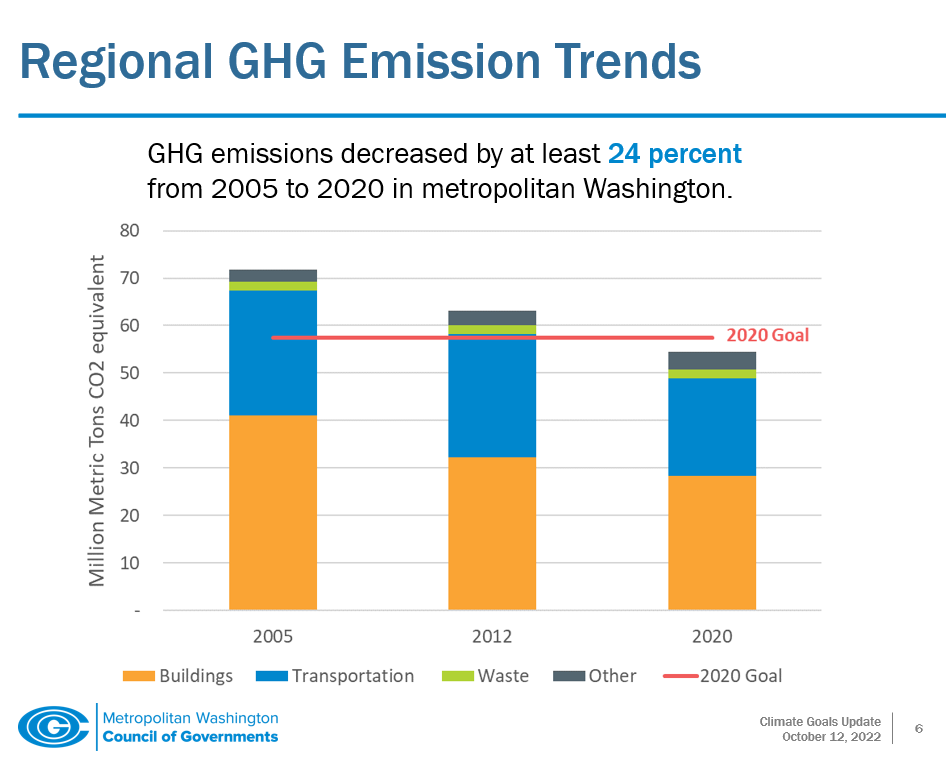At its October meeting, area leaders on the Metropolitan Washington Council of Governments (COG) Board of Directors were presented with preliminary results revealing the region met and surpassed its climate goal to reduce greenhouse gas (GHG) emissions by 20 percent below 2005 levels by 2020. COG staff told the board that emissions decreased at least 24 percent between 2005 and 2020.
Despite an estimated 20 percent population increase between 2005 and 2020, reductions were achieved through a cleaner electrical grid, decreased driving, and decreased commercial energy intensity.
An increase in hybrid and electric vehicles (EVs) throughout the region also contributed to reductions. Notably, third-party green certified buildings saw a nearly 60-fold increase between 2005 and 2020 and grid-connected rooftop solar installations increased over 100 times between 2009 and 2020, also surpassing adoption goals set for these emissions-reducing strategies. Buildings and transportation account for 90 percent of regional GHG emissions.

“Our region has made great strides in reducing emissions to combat the effects of climate change. Our achievement of the 2020 goal shows that we can be both ambitious and successful as we look to build a cleaner, sustainable future,” said COG Executive Director Chuck Bean. “Reducing vehicle miles traveled, cleaning up our grid, and increasing access to electric and fuel-alternative vehicles have all proved to be essential in reducing our carbon footprint.”
Area leaders are now focused on achieving a 50 percent reduction in greenhouse gas emissions below 2005 by 2030. Achieving this goal will rely heavily on increased deployment of solar power, net-zero energy buildings, and increased adoption of alternative transportation modes such as transit, telework, walking, and biking.
COG continues to assist local jurisdictions in reducing emissions through efforts such as supporting local climate and EV planning, cooperative procurements, clean energy feasibility assessments, trainings, and regional planning coordination including the EV Deployment Working Group and Clearinghouse formed by COG last month.
The region first set its GHG emission reduction goals in 2008 as part of COG’s Climate Change Initiative, one of the first of its kind in the nation, which identified benchmarks for 2012, 2020, and 2050. The 2030 goal was adopted in 2020.
A finalized report on GHG emissions reductions in the region is anticipated to be released later this year.
More: Climate Goals Presentation